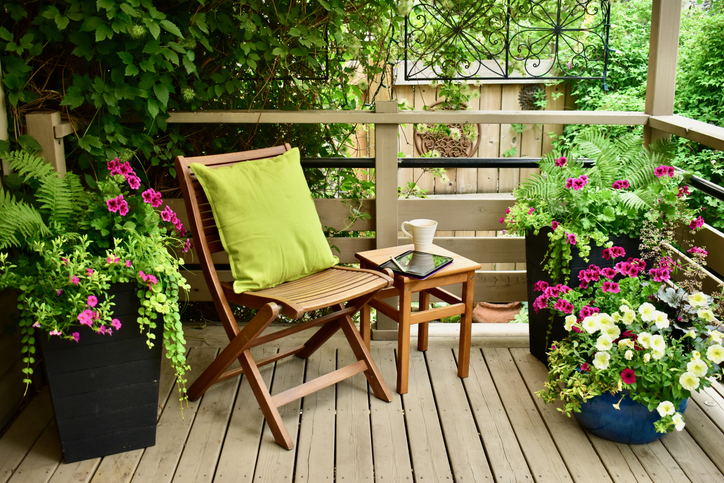We may earn revenue from the products available on this page and participate in affiliate programs. Learn More ›
A pocket garden is any small garden that makes use of what previously were considered unusable spaces. You can place it in the ground, in containers, on straw bales, in a hollow stump, or even in literal planting pockets suspended from walls.
Because it is small, a pocket garden shouldn’t require as much room or planting expense as a more sizable plot would. It also is practical for people who don’t have the time or strength to look after a large number of plants.
RELATED: 12 Big Ideas for Small Backyards
What Is a Pocket Garden?
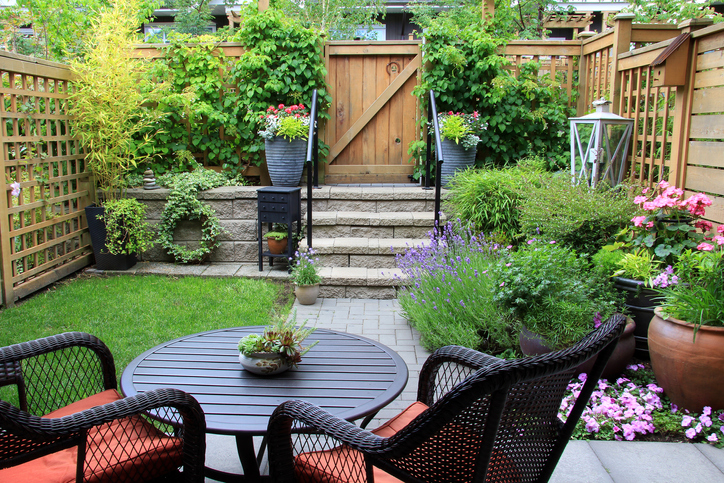
A pocket garden is a small planting plot or large pot tucked into a convenient corner of your property. That property can even include a container on a renter’s balcony or entry. It might fill a gap in greenery or fill the need for more plants for green-thumbed enthusiasts.
In fact, part of the fun of pocket gardens is using your imagination to find unused spaces in which to put them. Such a plot can be as small as a dish garden, a pot or two for patio plants, or a larger corner garden with a reading chair, which you can call your pocket book garden!
RELATED: 20 Ways to Garden Without a Backyard
How to Make a Pocket Garden
There is no one way to make a pocket garden since the process will vary according to the size and shape of your space. However, you will want to avoid overly large and aggressive species of plants. Instead, spend your “pocket money” on mini but mighty plant types.
Find a space that isn’t being used in which to put your garden.
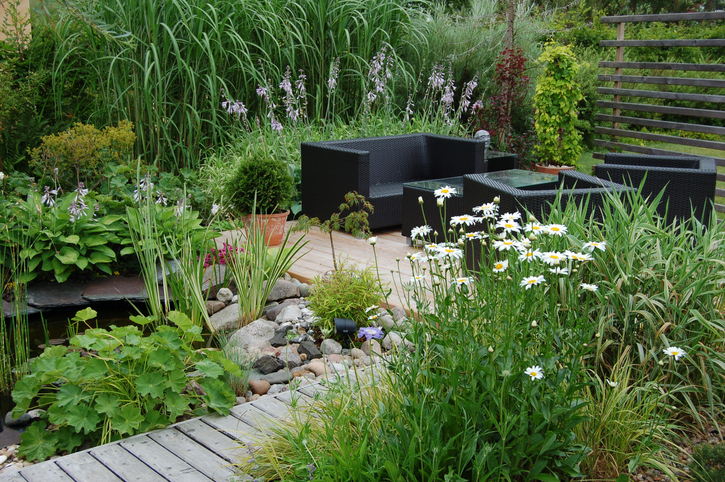
For an in-ground garden, the space could be a narrow strip between the driveway and the wall of the house or the area at the center of a circular driveway. Place pots or planting bags in the corners of porches, stoops, and balconies, or atop flat roofs or unused driveways—preferably not the heat-generating blacktop type.
Alternatively, suspend hanging baskets from shepherds’ hooks anchored in the ground, or support window boxes and planting pouches with wall brackets or hooks mounted on vertical surfaces. For example, you could hang planting pouches on the side of a shed—or plant a succulent garden on the shed’s roof.
Succulents also might be able to thrive in gravelly spots where nothing else will grow. If you don’t have actual ground in which to raise vegetables, try planting them in a couple of bales of straw or in large grow bags.
RELATED: 11 Indoor Gardening Projects Absolutely Anyone Can Do
Choose a theme for your garden and draw up a plan.
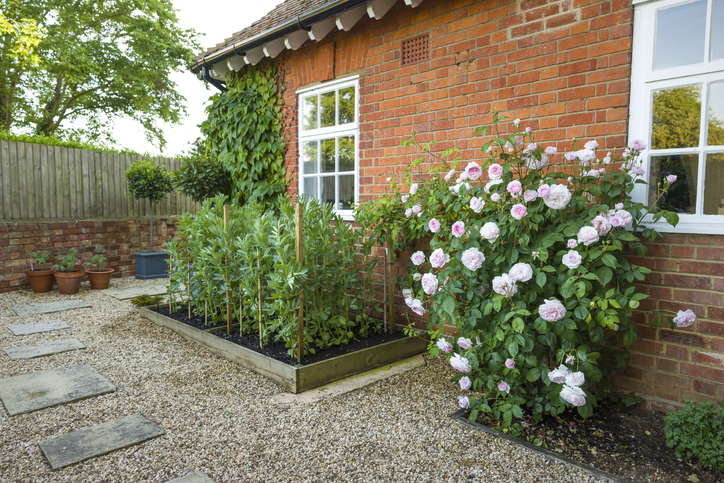
Plants for pollinators is a popular choice of garden themes. For a pollinator pocket, Illinois Extension suggests a 4-foot by 6-foot oval packed with native species that butterflies and moths love, such as milkweed, aster, blazing star, and others.
If your lawn contains a boggy spot that is a pain to mow, consider converting it into a pocket rain garden. For that, choose natives that don’t mind moisture such as marsh marigold, swamp milkweed, or bee balm.
That sunny 3-square-foot space beside the back door of your kitchen might make an ideally placed salad garden. “Toss” a tomato plant in the middle, positioning around it salad greens and culinary herbs such as basil and thyme.
Select compact varieties or train your plants to grow vertically.
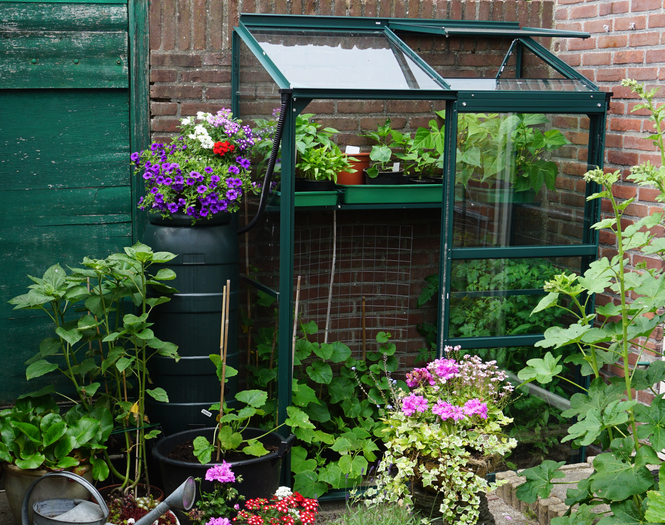
To keep your small garden small, it’s a good idea to plant compact cultivars that won’t outgrow the space provided for them. Examples include vegetables especially bred for container culture or miniature roses rather than full-size ones. Just do a little research on the plant’s mature size, which can be considerably greater than that in its nursery pot.
Alternatively, you could direct plants upward rather than outward. If your dream is to have fruit trees, for example, you might be able to keep them in a small space by espaliering them, which means to grow them flat against a wall or fence. The same process, though labor-intensive, also can work to create a pocket garden with decorative small trees and woody shrubs. This approach probably will be most satisfying for gardeners who prefer that their plants look neat rather than natural.
Vegetables such as peas, pole beans, and vining tomatoes also can be trained to grow up a vertical surface. And herbs and salad greens will thrive in planting pockets that hang like shoe bags from a wall to create a vertical pocket garden.
RELATED: 32 Inspiring Flower Bed Ideas for Yards of Any Size
Set the plants in place.
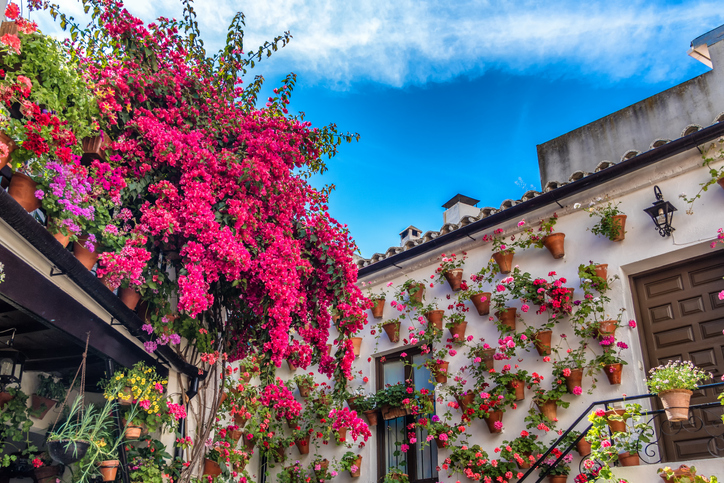
For the best results, harden purchased plants or those you’ve started from seed before setting them out. Then transplant them into your garden or container on an overcast day, keeping them watered well until they are established.
Ideally, most in-ground plants should be set out in the spring, after frosts have ceased and before the weather heats up. However, container flowers often can be “switched out” with others throughout the growing season. For example, a pot of spring-blooming bulbs such as tulips and crocuses could be changed to summer annuals such as petunias and geraniums, and then again to autumn annuals such as pansies and sweet alyssum during the course of the growing season.
RELATED: 15 Affordable Landscaping Projects You Can DIY in a Day
Keep in mind that plants in small spaces may require more water and feeding.
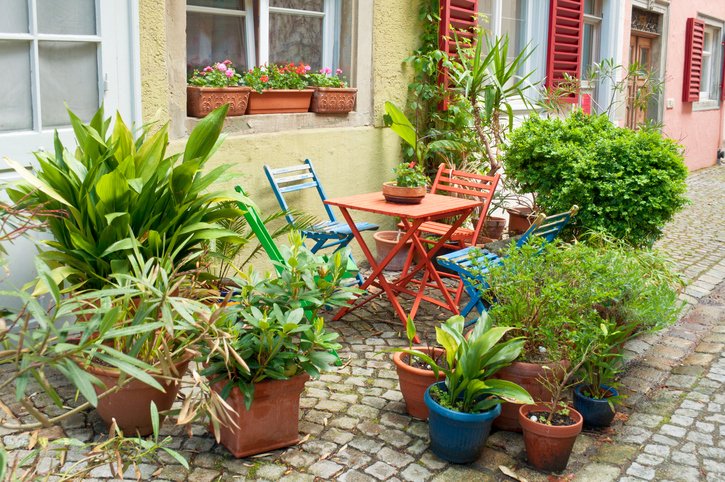
Although pocket gardens don’t require as much care as larger ones, they will need some tending, especially if they have been tightly planted or could outgrow their pocket of space. When crowded in small spaces like containers or small plots, plants can dry out quickly. In that case, you might need to water them every day—perhaps even as much as twice a day—during rain-free periods. For most flowers and vegetables, water when the surface of the soil is dry. For succulents, wait until almost all of the soil in the container or bed is dry.
Plants in containers usually require frequent applications of water soluble fertilizer too. Those in the ground benefit from applying an organic granular fertilizer to the soil before planting.

